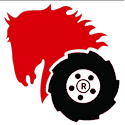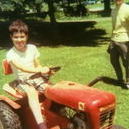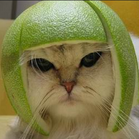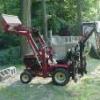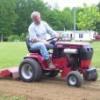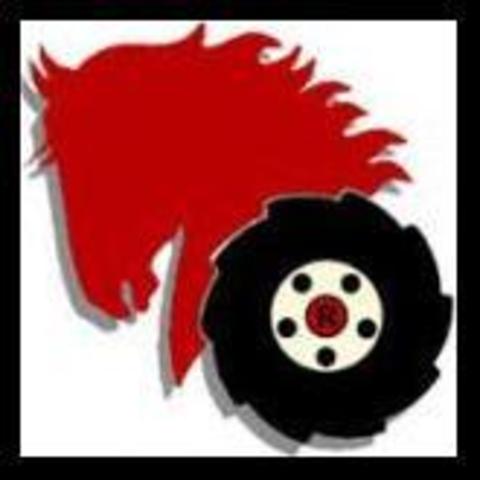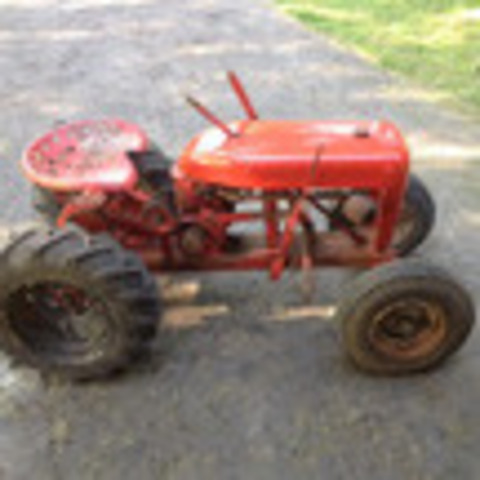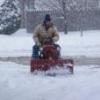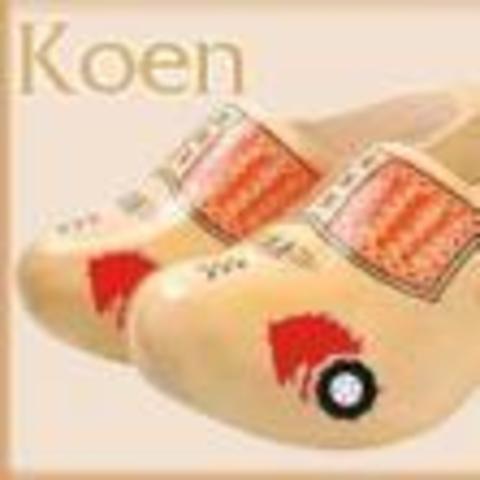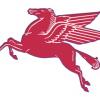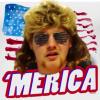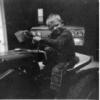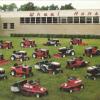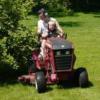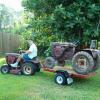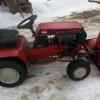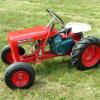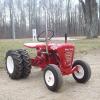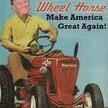Leaderboard
-
in Posts
- All areas
- Markers
- Marker Comments
- Marker Reviews
- Articles
- Article Comments
- Article Reviews
- Classfieds
- Classified Comments
- Classified Reviews
- Wiki's
- Wiki Comments
- Wiki Reviews
- Blog Entries
- Blog Comments
- Images
- Image Comments
- Image Reviews
- Albums
- Album Comments
- Album Reviews
- Files
- File Comments
- File Reviews
- Posts
-
Custom Date
-
All time
November 28 2011 - November 27 2025
-
Year
November 27 2024 - November 27 2025
-
Month
October 27 2025 - November 27 2025
-
Week
November 20 2025 - November 27 2025
-
Today
November 27 2025
-
Custom Date
07/03/2015 - 07/03/2015
-
All time
Popular Content
Showing content with the highest reputation on 07/03/2015 in Posts
-
7 pointsI just completed a hub conversion on my 312-8 with 520 front end. Being unable to find 520 front wheels, I decided to go with trailer hubs. I could not find a good write up on the swap, so I am posting this for anyone who wants to do this swap. All parts (minus tires) came to about $100, so the conversion is around the same price as a set of clean 520 rims. Parts List -Trailer Hub Kit, I bought this off Ebay From Elgin Trailer Parts, This includes 2X 1000lb 4 bolt trailer hubs, bearings, 1" x 1.25" seals, and dust caps. (Fits BT8 1" spindle) Cost- 57$ shipped -Wheels, I ordered 5-3/8 x 8 rims (standard for 400 series). A big benefit to trailer hubs is that they accommodate a wide variety of rims/tire sizes. These hubs use a 4 x 4" bolt circle. Cost- 32$ shipped -Spindle Washers, 1" x 1.5" flat washer, 14ga or 18ga. I bought these from lowes but These can be sourced anywhere. Qty 2 needed. -Hub End Washers, .75" x 1.25" flat washer, 14ga or 18ga. I bought these from lowes but These can be sourced anywhere. Qty 2 needed. -Bronze Sleeve Bearing, 1" ID x 1.25" OD x .5" Long, I bought these from Mcmaster-Carr P/N 6391K281 Qty 2 needed. -3/4-16 Slotted Lock Nut, Mine were missing. I bought these from Mcmaster-Carr P/N 95030A270, Qty 2 needed, Sold in 10 pack. Installation is straight forward. The pictures pretty much sum up the steps. The bearing need to be hand packed with grease before assembly. Install the inner bearing before inserting the seal. The hub nuts are not intended to be torques very hard. Just snug them up and install the correct size cotter pin. The hubs are very smooth and solid. I am very happy with the results. Thanks, -Justin
-
5 pointsPost 'em up here... any picts to share of your 's flying the ol' RWB glory today.
-
5 points
-
5 points
-
4 points
-
4 pointsI'm interested in participating. The show before this last one, my brother came to the show without a tractor so we bought all the parts at the show and built one. We did it right in the dirt road in front of our display area. It did take some time away from doing other things around the show but that kind of stuff is fun for me. We had a couple of spectators and few hecklers as we did it plus quite a few people stopped by to check it out so there was plenty of interaction going on. After getting it all together and dumping about a quart of water out of the engine, we had it running and driving. It actually ran pretty good without cleaning the carb and didn't smoke. Cost was about $375 but Jdogg (Jordan) hooked us up with some real good prices on the engine and MANY of the small miscellaneous parts which made it possible. We could've just bought a $250 or $300 tractor and drove away with it but doing it this way was MUCH more fun!
-
3 pointsThe wheat harvest was in full swing today in SC Pa. With 2 JD combines w/30' heads, 2 grain haulers, 2 balers, and several grain trucks. I know this is a small operation for you western guys, but this is a pretty big operation for the rolling hills of SC Pa.
-
3 points111-6 with 30" single blade deck 416-H with 48" deck and bagger 520-H with 42" deck 520-H with 60" deck 520-HC 520-HC is still awaiting his arm rests but is otherwise complete. The 48" deck that came with it is partly restored and will be ready for next year. Thanks, Cleat
-
3 points
-
3 points
-
3 points
-
3 pointsPrecisely why I got it Mike.... for, you know...that off brand guy next door.
-
3 points
-
3 pointsAt the show we walked around and took a few pictures of custom/modified Wheel Horses, what we looked for mainly is what need/ reason was this machine built by the owner. Now keep in mind that a "custom built" Wheel Horse could just mean the owner added two cup holders but I think what Eldon and others would like to do is build a custom/modified Wheel Horse that can do a special work task that a stock Wheel Horse could not do. Some of the "rat rod" Wheel Horses are neat and well built this can be easy to due being that one can bolt any part to the frame . My Mighty Lawn Ranger Six Speed was built to have the extra gears to get the most amount of work from the 6hp Tecumseh engine and the rear axle brakes were added so the tractor would not spin the rear wheels while working in the culvert in my front yard. The 1/2 Wheel Horse Lawn Ranger I built was for driving around the Portland, IN, by welding two frames together I could haul parts and people at the same time in the show grounds. On another note the put together/ scrap parts Wheel Horse could be done but even then time is an issue. Years ago I gave two brothers a (I think it was a Raider 10) a running Wheel Horse, drove it off the trailer Friday night took it all apart, cleaned it, painted it and put the tractor back together (running and tuned) by Sunday night. .......... it's more parts then you think. I do love my restored Wheel Horses but I'm a hot rodder at heart and like the custom/modified Wheel Horses too. It will be interesting to see just what shows up at the 2016 Wheel Horse Show
-
2 pointsIn a previous post of my Commando 8 redo, I discussed repairing the wallowed out key way in the axle. Instead I replaced the 3 speed with one I had on the shelf. Today while rooting out some potential items for the SHOW, there was that 3 speed. So today I made a stab at the repair. I made a dummy key from a piece of 3/16 brass , welded around it, and ground/filed it down. Only time will tell if the weld will hold up to the torque.
-
2 pointsIt was great to finally meet so many of the great Red Square members at my first Big Show! Everyone was so friendly and there were so many great tractors and things to see and do-it was really a fun day! I actually got so caught up in the excitement of the show that I bought my first tractor from JayinNC- a WH A-81 mower - within 10 minutes of getting there! Thank you very much for your hospitality! Sincerely, Mrs. Rules (Linda)
-
2 pointsI just bought myself a 16th birthday present and it isn't a truck its an rj35, I have been looking for one and asking around shows for awhile now and am very exited to have found one In this good of shape but I am not that familiar with the rj's yet, what do I have? from what I have learned so far its a late '55 to early '56 and is mostly complete except for a belt guard,cast steering wheel,reverse pulley and air cleaner. it came with the on/off switch and throttle cable, I cant wait to start up on getting this going!
-
2 pointsI managed a few... Here is Squonk at the bus stop... A great shot of Zeek Mike sitting on this year's Raffle Tractor Bob Maynard taking a spin around the ground...stopped to talk with me and my wife Chris This is Howard.....857 Horse from Virginia. Terry and Lola with Granddaughter...that's buddy under the table. Howard and Don ...varosd Vinsrj RacinBob...Bob and Nancy...it was excellent spending time with them this year. Jay in NC, Jack (wishin4a416) and Bob Maynard SteveBo Nylon (Karl), Fireman (Jeff) and Vin RWilson, Stevasaurus, KenB and RacinBob... Me and Cas (formariz)...holding up a couple of plates for Koen... Me, Birdie (RedBird) and Brian (Buckrancher) The rest are various attempts at getting a good group picture for this year...hope you enjoy.
-
2 pointsPretty busy at the show with the great unexpected weather on Friday. didn't get a lot of people pics as most were off wandering the show as well. Thursday night I realized I never took the phone out once. Tried to make up for it Friday. I hope someone got a pic of me trying to "Hitch Hike" during the cruise: Mirror shot when I left home. Where's The Dino? Here he is out at dinner! Got Racinbob's wife Nancy in a candid shot! Great people by the way, awesome meeting you! I took a pic of my tractors in case no one else did! RS First Dog Pepper! Karl at the controls! Tractors lined up Comin at Ya Steve campaigning again. I think with R Wilson A Wallfish inspired Hot Rod Zeeks Masterpiece. My favorite tractor at the show! Well done neighbor! Steve's Heavy Hauling! That blower and tractor fit like a glove on the vintage trailer! Looks like Lane snagged someone's skivvies during the parade! YIKES! Bringing up the rear of the parade. Pics from my Hitch Hiker seat at the cruise Lights are on but nobody's home!!!!
-
2 pointsLets see some burnouts with the flag waving! So far my independence display consists of sweeping the dead grass off of the yard now that's it's finally dry enough to do it and picking up dog poo. Oh and cleaning the tractor after I missed some. I' ll have my tractors and flag out tomorrow providing the weather man is right this time.
-
2 pointsGreat pictures Steve. Nancy and I had a wonderful time hanging with you and Chris as well. We sure had some good eats too! The internet and phone service was so bad in the Tennessee cabin we went to after the show I gave up and was RedSquareless for a few days. Still had fun and survived everything. Gotta bail the hay today but I'm looking forward to looking at all the pics and videos. I had such a great time meeting so many RedSquare members at the show.
-
2 pointsWelcome Mrs Rules ... most of us have sheds, but not one that totally engulfs wheelhorses'. Beware of anyone willing to store it for you. Rick
-
2 pointsstill pretty big operation for me, i'm used to see one smaller combine with two tractors with trailers that go directly to the farm
-
2 pointsGuess we all use unleaded gas but.............there was the day, long ago, lead was added to gas to help lubricate the engine. I don't use a lead additive but do add on occasion Berrymans or Seafoam to my fuel. Recently started using only non-ethanol gas in all my engines; 2 and 4 cycle engines. Tired of too many carb issues. One 16 hp Kohler in my '85 was runnin' not so good. Seafoam down the carb throat and non-ethanol gas fixed the issue in a jiffy! I couldn't believe how easy and how well the '85 engine is running, like new. Same routine for the '90 520-8 Onan. Fixed. Lucky me! When 1st pouring Seafoam down the carb's throats, smoke like a diesel. Then, like magic, clean exhaust, engines purring. Lucky me!
-
2 pointsThis was my 2nd trip up there to the "big show" and it was just as awesome as the first time I went. I didn't bring any tractors home, but I saw some cool stuff, and got a lot of miscellaneous parts for the ol' WH shelf, and most of all I got to see some old friends and meet new ones! big 12" meats on the back Cool vintage bicycle headlights. Pretty much the most awesome vintage sign ever. This was for sale at Dale's. I'll have one one day! White walls!! Shoo-fly pie! Mmmm! Craig test driving/cutting his wife's new A-81 from Jay. This is John's (wallfish) 401. I got to ride it around a little bit and it was so cool! Ice cream social Friday A little sun set action This is what it looked like on Saturday morning at 6:00am Looks like Rich's 953 was following me in bumper to bumper traffic on I-95 going home!
-
2 pointsBuddy and our granddaughter Taylor getting ready to head out to the Big Show, she was sitting in his seat.........lol Buddy stole a hat as soon as we got to the show, his friend from 2 years ago came by to see him. Buddy wanted his hat so he gave it to him lol This is the gentleman that came by to see him........I think Buddy remembered him from 2 yrs ago Getting everything set up and looking handsome.............Taylor was looking cute to... had another friend stop by and see Buddy, she met him 2 yrs ago also and was hoping he would be here..........I think he likes her this sweet little girl just wanted to give him kisses................. he loves our granddaughter Taylor........................
-
2 pointsI had a great time and even enjoyed walking around in wet socks for a change! Rain did not dampen any spirit at this year's show! The variety of tractors and attachments were great ! Glad to reconnect with old friends and make some new ones Too!
-
2 pointshere some pic's the wife took Mike ,Steve and me Steve ,Mike ,Karl , Steve and Doc me and Vince guess who sneaked in this shot My wife Jo on the 854 Brian
-
1 pointWheel Horse B/C/D Tractor Dash Panel Restoration Tutorial How to properly restore a Tractor Dash Panel Wheel Horse Dash Panel Restoration Tutorial Originally posted by: MikesRJ - 03/06/2010 Click any picture in this article to view a larger version of the image Restoring old tractors (garden type or full-size farming equipment) presents the restorer with many challenges. Not so different from automotive or aircraft restorations, certain little tricks-of-the-trade are learned along the way which every restorer should have in their basket of tricks. The older a restoration subject is, the harder at times it is to locate a suitable "show-quality" part to complete the restoration. Sometimes you simply don't have a choice but to restore the part you have in hand because a replacement just simply does not exist. This how-to presents one of those tricks. The best part about this particular restoration technique it that it can be used on any part made of plastic, PVC, vinyl, leather, cloth or wood. The images above are of the Dash Panel before it was removed from a Wheel Horse C-160 Tractor, and after this restoration process was performed. Yes, boys and girls, that is in fact the same dash panel shown in both pictures. Excellent results can be achieved if you remind yourself to be patient, take your time, and follow the process presented here. Practicing the method on anything with raised letters beforehand also greatly enhances your chances of success. Simply follow this process on a "scrap" item and you should be ready for the actual piece in no time. PROCESS OVERVIEW: As restoration quality and New Old-Stock (NOS) Wheel Horse Dash Panels are harder to come by, it becomes necessary to restore what you have rather than replace the part entirely. This page is dedicated specifically to the restoration of an otherwise "good condition" dash panel that has been time-weathered, and return it to its original luster. Before moving on to restore your tractor restoration Dash Plate, it is HIGHLY SUGGESTED that you read through this entire article and perhaps try this method on a spare or "sacrificial" part beforehand. You only have one chance to do it right on your final piece, and a million ways to do it wrong along the way. As a side-note: This process can be used with very little variation on any tractor part which is made of vinyl, plastic, PVC, cloth, leather, or rubber. The VHT line of products is extensively used in the automotive/aircraft restoration worlds for returning anything made of these materials back to near original appearance. See more details concerning VHT Vinyl Dye products at this website: http://www.vhtpaint.com TOOLS REQUIRED: 1. Small bristle brush and Dawn Dish Detergent 2. 1/8" Metal punch and heating source (if making repairs) 3. 800 grit Wet/Dry Sand Paper 4. 0000 (fine) Steel Wool 5. Common Automotive Brake Fluid 6. Paper Towels 7. VHT Vinyl Dye, Gloss Jet Black (p/n: SP941) 8. Elmer's "Painter's" Opaque Paint Marker (fine & wide tip) 9. Dental Picks, Tooth Picks, and/or Exact-O Knife PAINTING TECHNIQUE: The white borders, letters, and symbols on the dash panels were originally manufactured using a screen printing roller technique. This method produces an extremely thin, opaque layer of material which is extremely strong and relatively long lasting. Since reproducing this technique is far more difficult for the "home restorer", the method presented here is relatively easy, and mimics the original process quite well. The technique I use is pretty straight forward and quite simple to do at home. In order to apply the thinnest coat of paint the tip of the paint marker should be as "dry" as possible, but still contain enough material to deposit on the surface. This technique is called "Dry Brushing" and is used by painters and modelers as a method for adding subtle details to whatever they are painting. For the purpose presented here we are using this method to apply the thinnest coat of material we can, in each successive pass over the surface. Once the paint marker is prepared for use per the package directions, the tip of the marker should be touched to a paper towel and dried off as much as possible before touching it to the part to be painted. When moving to the next paint area on your subject piece, re-load and re-dry the tip, then proceed. When painting with the white paint markers, insure the tip is about as wet as when using an artists "dry-brush" technique before touching it to the part. Apply the paint so it thinly "flows" over the surface, and use a paper towel to keep the tip "almost dry" of wet, runny paint between individual characters on the plate. Apply the paint with a very light touch in single passes only. Don't cover any more than a single pass at a time, building layer thickness with each additional coat. As always, follow the package directions for all of the products used in this process. When applying the paint, you are NOT wiping it onto the surface like a paint bush. You are also NOT trying to cover the surface completely in a single pass, rather you want to build successive layers, allowing each layer to completely dry, until an even and completely opaque coverage is achieved. If you attempt to wipe the paint onto the surface, you will produce "edge roll-over" and the paint will either bulge over the side edge of the surface, or run down the side, both of which conditions are undesirable. You should apply the paint in a very light tapping, or patting, manner where the tip is ever so lightly tapped onto the surface, moved over half of the width of the paint marker tip and tapped again; and the process continues from one end of the detail to the other. The only exception to this is when you are applying paint to long, continuous details such as the two border lines around the Dash Panel. These features should be lightly glided over using the dry brush method, from one end to the other end, and the tapping method is applied to finish the strokes at the very tips of these details. Aside from the method of application, the most important factor to keep in mind is that you are NOT trying to completely cover the underlying black dye color in a single pass. What you ARE trying to do is build-up multiple, very thin layers of paint until the white completely masks the black underneath. If done in this manner you are left with very sharp, crisp edges and an overall very thin opaque paint coverage of these raised dash panel details. The second most important aspect is that you insure your panel is well supported, i.e.: will not move during the painting process, while the heel of you painting hand is firmly planted on the work surface as you apply paint. This will insure the steadiest hand, and you will therefore have better control of the paint marker tip and where it touches while you apply the paint. Of third importance, as in any paint application process, starting off with a well prepared surface ALWAYS results in a higher quality final appearance. Complete and thorough cleaning, drying, repairs, and re-cleaning are all painstaking and necessary steps before applying any dye or paint to the surface. The instructions below go into greater detail where necessary, and if followed closely will result in a "better than new" looking part for your tractor restoration. Step 1: Thoroughly Clean the Dash Panel Here's where it started! Once removed from the machine, the entire dash panel should be thoroughly cleaned of all dirt, grease, oil, and old marking paint on all sides. Automotive Brake Fluid is a good paint and marking ink softener, but care must be taken to insure the brake fluid does not "melt" the plastic. I normally test the brake fluid method on the back side of the part, or on any surface which will not be seen when the part is re-installed, in order to insure the brake fluid will not attack the plastic material. Use the brake fluid sparingly, and allow it to sit on the surface at least 1/2 hour, to "loosen" any foreign materials (paint, ink, or hard stains) from the surfaces. Then with a combination of 0000 steel wool (try not to scratch the plastic), gentry scraping using the edge of an exact-o knife, and/or dental picks and tooth picks, you can easily remove all of the unwanted debris. Once all of the foreign matter is removed, the plate should be thoroughly scrubbed with a small plastic bristle brush and Dawn Dish Detergent. This will remove any remaining oil and dirt from the plate, the corners, and the edges. Rinse with warm water and allow the piece to thoroughly dry before continuing. Once it is completely cleaned it should look similar to the image below. Starting Point Step 2: Repairing Surface Blemishes This is the tricky part. If any surface blemishes exist, you need to make a choice whether to make a repair or leaving it as-is. Obviously, starting with a high quality unblemished panel is more desirable, but you may not have a choice but to use a "less than desirable" piece due to replacement part availability. Attempting to repair any surface issue may only result in a far worse appearance than leaving it alone. Choose wisely based on your abilities. Only one surface blemish was corrected on this example (the second "N" in "IGNITION"), the second blemish (the "wiggle" in upper left corner of the Electric Clutch "OFF" arrow-bracket) was left alone as it was too dangerous to attempt repair without further damage. The right side of the "N" was smashed down and the right "leg" of the "N" was partially split in two. A small round punch was used to "re-form" the letters edge by heating the punch tip to just below the melt point of the plastic, and "pushing" the letter back into shape. The split essentially closed up and re-bonded to the adjacent part. Care must be taken to not overheat the punch as you do not want to melt the plastic, only make it soft so it will "move". Once repairs are completed, re-clean the part as you did in Step 1. Step 3: Restore Plastic Color and Shine Many products exist which are designed to restore vinyl and plastic to their original luster. I have used many of them with varying results. VHT (A division of Dupli•Color, Inc., a Sherwin-Williams Company) produces a vinyl dye which comes in several colors, and in Gloss and Flat finishes. The product is NOT A PAINT, it truly is a dye designed for vinyl, plastic, cloth, leather, and wood. The vinyl dye, when applied to plastic, forms a polymer on the surface which actually transforms the plastic material surface into a new material matrix. I prefer the look of the hi-gloss finish as it makes plastic parts look more realistically like a "new part" than does the satin finished dye. VHT Vinyl Dye, Gloss Jet Black (p/n: SP941) in the 11 oz. aerosol was used to treat this Dash Panel, which only required a single, light coat to restore the dash panel to its original appearance. NOTE: Allow the dye to absorb and surface-dry at least 4 hours before proceeding to the white painting process. Step 4: Applying the First Coat of White Paint Applying the white paint is rather easy, but does require a little technique and a steady hand. For this step I used Elmer's "Painter's" Opaque Paint Markers (available in most craft and hobby shops). The markers come in several tip-sizes, I used the fine and wide tips here, and is composed of an opaque acrylic paint. The acrylic paint bonds extremely well to the dyed plastic, and holds up to temperature variations and the weather quite well too. LARGE PANEL DETAILS: When using the paint markers, do not press down with any significant force while painting. The driest tip (artists "dry-brush" technique) and the lightest touch (the least amount of downward force) on the plastic produces the best results. Using the wide tipped marker, dry the tip on paper towel and very lightly cover the large borders with a single pass. DO NOT go over them a second time, as doing so will leave "brush marks" in the paint. The result should be an almost see-through appearance of the white paint. Several coats will be necessary, so if the black shows through, leave it alone. Also, "paint" any large details on the face area; such as the choke symbol, large letters, rabbit and turtle; using the wide tip paint marker, but use the "PATTING" paint method described below for these smaller details. SMALL PANEL DETAILS: As before, you are applying a very thin coat, so make sure the marker tip is almost dry and apply only a very thin coat on the first pass. Using the fine-tip paint marker for lettering and small details, use a patting (or tapping) technique to apply paint to the tops of the letters. Begin at one end of the letter and overlap your taps, moving toward the other end of the letter. Don't wipe the paint on, PAT it on! Especially at the ends of the letters. This keeps the paint from "rolling over" the edges of the raised detail. Dry the tip on your paper towel frequently, and between every new detail painted. NOTE: Notice the black showing through the white in the image below. Keep the first coat VERY, VERY light. Step 5: Apply Additional Coats of White Paint ALLOW AT LEAST 4 HOURS BETWEEN COATS The application of paint continues as described in Step 4 until all of the painted areas are completely opaque and covered well. With each pass you will see the paint begin to almost "pool" on the top of the surface. As the paint dries it will flatten out to a nice even coat. The desired result is normally accomplished in just two to three coats of white paint. If you have blotchy or spotty coverage, you can use 800 grit wet-dry sand paper to lightly sand the white faces flat and even the paint coverage, then apply a final top coat after re-clean and dry the part. Make sure you allow the paint to dry thoroughly before sanding, and re-clean the part before applying the next coat of paint. Make sure all surfaces are evenly covered without brush strokes. The image below shows good coverage with very little over-painting or edge "rolling" after only two coats have been applied. Some letters and small details will need to be scraped and cleaned up prior to applying the last coat of white paint. Step 6: Finishing Up The final step in the process is to clean up any mistakes or over-painting (edge-rolling). This step is normally done BEFORE the last coat of white paint is applied, so that any scrape marks or edges can be covered on the final pass. I normally use dental picks, tooth picks and/or the tip of an Exact-O Knife to clean any edges which were over-painted or where errant paint has been deposited between letter lines. Any over-paint on the panels surface can be covered up by spraying some of the VHT dye into a small cup and using a fine tipped artists brush to "dry-brush" the paint drip into oblivion. Once the final coat of white marker paint has dried for at least 24 hours, crumble-up a piece of regular kitchen paper towel and buff all of the white painted details. The paper towel material is just course enough to polish the top surfaces and burnish the edges of the white details, giving your panel a "finished" look. The polishing will also remove any specs of dust which may have settled on the surface during drying time. Your piece will now be remarkably similar to an original new part, and is ready for installation on your pride and joy machine. The completed piece is now "Show-Ready" and looks like the images below. My thanks go out to Bob Maynard ("RMaynard"on the Red-Square forum) for the use of his B-80 dash panel in the creation of this How-To. Bob mentioned somewhere on the bulletin board that he was in the market for a NOS Dash Panel for his B-80 restoration. He also mentioned that he had an old usable one in-hand, but did not think it was show-quality enough for his restoration. I offered to restore his old panel for this tutorial, with the thought that he could perhaps use the result on his B-80 should he not find a suitable replacement. I hope you enjoy the tutorial, and Bob; Thank You for allowing me to use your panel for this example.
-
1 pointAs some of you may know there has been some discussion about having a meet n greet at the family farm in western NC. I wanted to make it official that this will happen and it will be Sat-Sun of the first weekend in oct The address is 242 Mcmurray Road Rutherfordton NC 28139 There is plenty of room for RVs and trailers. However there is no provisions for water and power to plug in. I will rent a porta john and water is available. This is a first for us so any suggestions are appreciated. Thanks Bert
-
1 pointHi all, I'm new to this forum but I was lurking around researching before I bought my first Wheelhorse a couple of weeks ago. I bought a 520h and am really impressed with it. I don't know what year it is but it has the swept front axle.
-
1 pointI drove a few hours out to the Poconos from Central PA to pick up a 417-8 Speed a gentleman had here on RedSquare in April. I've been putting hours into it and fixing/painting/shining it up. Bought a set of decals for it from Vinylguy and have the engine purring real well with a new set of points and a condenser, carb cleaning, new fuel lines and filter and new plugs. Some wires and ends fixed. A new tie-rod end and front bearing and the seat is getting reupholstered. The muffler lost it's chrome except for the tip which I tried to save! (Not sure I like that yet)! Compression is 97 - 96 PSI. It's a 1986 with 1280 hours on the working clock. Still need to do the rims and swap tires with a better non-cracked pair of turfs. It actually looks too nice to mow with but it will be a worker. Maybe just not as hard as my 310 and 416! I like knowing this KT engine has some oil pressure inside it! Before and Afters. (Picture heavy). I chopped the resolution a little so I didn't kill anyone's weak broadband. Wanted to get to the big show since I'm a hair less than 2 hours away from it but it isn't going to happen this year! Again!
-
1 pointLet me be the first to say We can come up with thoughts on how to make this a great success and an ongoing event. LOVE IT!
-
1 pointAppreciate it, Mike- Thank you! That is a darn good question! Especially with how these tractors seem to be multiplying - I may need a magic shed myself -and soon! Point taken! No wonder Mr. Rules liked your post! LOL!
-
1 pointSerial 383029 is the highest 1967 serial I have recorded Serial 381200 is the highest 867 serial recordedSerial 380818 is the highest 1067 serial recorded Serial 380578 is the highest 1267 serial recorded Serial 377965 is the 867 in this thread Serial 374404 is the lowest 1067 serial recorded Serial 367508 is the lowest 1267 serial recorded Serial 364882 is the lowest 867 serial recorded Serial 000955 is the lowest 1967 serial I have recorded Garry
-
1 point
-
1 pointAnything I've ever read or heard about using unleaded gas in an older engine is as follows.Unless you're running an engine at full throttle and under a constant load,no damage will result to valves or valve seats.How many of us here run an engine at full throttle and constant load for hours at a time? I know I don't.
-
1 pointI like the idea and would be more than happy to participate on a team. I'm not all that knowledgeable on all the aspects of building these tractors, but what a great learning experience it would be. I'd like to know a lot more about rebuilding the kohler engines and transmissions. The frames, steering and bodies are fairly straight forward. I've come to really like Wheel Horse, and the more experience I could gain would only fan the flames of this addiction.
-
1 pointYeah Dick, this operation, owned by the Barleys from Lancaster Co, have their farming well equipped and organized. They drive the combines the 30+ miles here to York Co. and farm about 20K acres of wheat, corn, and soybeans on leased farmland. When they start combining, they don't stop till they are finished. The grain is off loaded from the combines to the haulers "on the fly" then hauled to the waiting trucks that haul it back to Lancaster Co. These harvested wheat fields will be planted in beans next week. I really enjoy watching them operate, and I have a ring side seat from a little RED HORSE. I picked the small disc parts up at an auction with a Brinley cultivator and realized it was small enough to fit under the frame of the Commando 8. It actually works pretty well there mainly because it is easy to add 176.5 lbs. of dead weight for cutting. I just stand up to cut and sit down to lift and clean the discs. How is the back coming ? It's been nearly 10 months since my wife had L3, L4 and L5 fused and she is really seeing improved mobility the last two weeks, so don't get discouraged, the healing is a long slow process. I was really glad it worked out for James to bring the 953 South and get it closer to you. Best Regards, Ed
-
1 pointI took a broken lever, Added a cut off hydro lever I took off of a junkyard tractor. Now I can keep the left hand on the wheel and operate the lift with just my fingers while controlling the hydro with my right hand.
-
1 pointMade short work of that job didn't they. I have never seen the mid mounted disc setup, looks neat.
-
1 pointearly K's did not have valve seat inserts they used the cast iron block Brian
-
1 pointKarl, This was a subject that was on my mind to speak to you about but we didn't get enough time together. Years ago at the show we tried to get teams to put back together a model 656 and see what team could do it the quickest, sort of like at the county fair were a group of guys rebuild a model T in 10 minutes. Well what happened was nobody wanted to attempt this project at the show. I had a model 656 taken apart (except the engine and transmission) with the parts laid out. What ended up happening was Ed Mayhew and I put the tractor back together with taking challenges from the crowd as to just how fast we could do it (and a whole lot of heckling too). Times of 1/2 hour to 45 minutes were figured but it did take us only 18 minutes (tractor running and no power tools). AT the Florida Flywheels Show I attempted to build a pulling tractor from parts found in the flea market and enter the tractor in the pull ........... I got close but the cost was too high and this with no hi performance parts. I ended up borrowing weights and putting them on my 854 for the 1,000 pound class, with me on the 854 and borrowed weights we weighed in at 600 lbs BUT we still beat a John Deere in the class ! Fabrication takes a torch, a welder and a engineering mind with lots of time. Wild Bill
-
1 point
-
1 pointI use lead additive in all my older tractors. The motors where designed at a time when lead was the norm in gasoline. I remember correctly it had to do with engine temp and valve lubrication. For what it cost for a bottle it sure can't hurt.
-
1 point
-
1 pointOur granddaughter Taylor came with us this year to help us out with our booth....she did a fantastic job helping everyone. Thank you Don Varos for letting her ride your tractor...she absolutely loved it!! Great Group of Guys........good seeing you all again! Thank you to everyone that helped Terry last year when I was unable to come with him......it meant the world to me knowing you all were there for him. trying to balance...... ir time to set up the booth
-
1 pointSo, here are mine. Not many human interest pictures like Stevasaurus posts, but this is mainly to give those not able to attend a feel for the "sea of red" at the show. I'm not sure what happened Saturday, but my pictures were taken after we set up on Thursday, and Friday morning. The first couple are of our campsite. The "Maynard Hotel", with Zeek's hauler/camper in the background, and Brian & Jo's Wheel Horse hauler/camper. The "uptown" campers Karl walking his dog. Stevasuarus talking to Racinbob and his wife, with Steve's wife Kris talking to Terry (vinylguy) in the background Don Varos in red discusses pie. Vinylguy's setup before they moved him to the barn. Bob Maynard's Wheel Horse Stuff. Yup, that's my display. rwilson. wallfish. woodchuckfarmer, and Jake And then the rains came. Off came the shoes and it was swim time. These next pictures are Friday's. This year they had a safety seminar for tractor drivers 15 and under. Wild Bill had a course set up for the kids to drive. If they passed, they got a red wristband to say they were safe drivers. I think every one passed. No thanks Steve, I'm trying to quit. He worked at the teeter-totter all day and finally SUCCESS. And here is everyone that showed up for the group picture...
-
1 pointWell since retiring MJ has had me pretty busy so we elected not to go to this years show. One because of the time, and the other is because we have been spending a lot of money on building materials for the projects we have been doing around the house. At Last years show I talked to Rich Wilson and he told me he had a tall chute blower for sale. After the show we talked on facebook and we agreed on a price and I paid him for the Blower. After a couple transports fell through I asked Stevasaurus If he could transport it to my place on the way home. My buddy came through for me as always! Thanks Steve. Him and Chris came by and we had a GREAT VISIT. MJ and I enjoyed that very much. It's always good to see our Pals. After unloading the spare back up blower. I showed him around the DUKE"O"MINIUM and of course he had to get in and fire up the Ole Snow Chucker and hear that Onan Purr. Here are some Pics. Oh by way.... one thing that I didn't like was this Looney Tune FLAMINGO he brought with him! Darn thing went over by our pond and tried to violate our Blue Heron Crane!! And if that wasn't enough that thing tried the same to our Peacock and my Horse's!
-
1 pointAll good suggestions. If you ran the tractor for 45 minuets without any issues by cleaning/leaving the cap loose search no farther. If you lost your keys and found them, you wouldn't keep looking for it so leave it alone unless you have more issues then dig a little deeper. A lot of times fiddling with many things at once will only get confusing and you will never know what the cause really was, not to mention it may cause other issues and more frustrations. There are a lot of great guys willing to help you out on here if you get stuck. If you do ever remove a spark plug to check for spark, keep it away from the hole you removed it from, spark + fuel air mixture equals flame. Not to mention you may have to clean your shorts afterwards :-). And be careful, coils have a nasty bite so make sure you have it grounded good. Or even better go to your local auto supply store and they should have a test spark. It looks kind of like a spark plug but has an alligator clip so you can ground it, just have to remove the wire and you don't have to worry about either of those two conditions. another way is to buy an inexpensive inductive timing light and you will know right away what you are loosing if you run the tractor and know when it is about to shut off.

